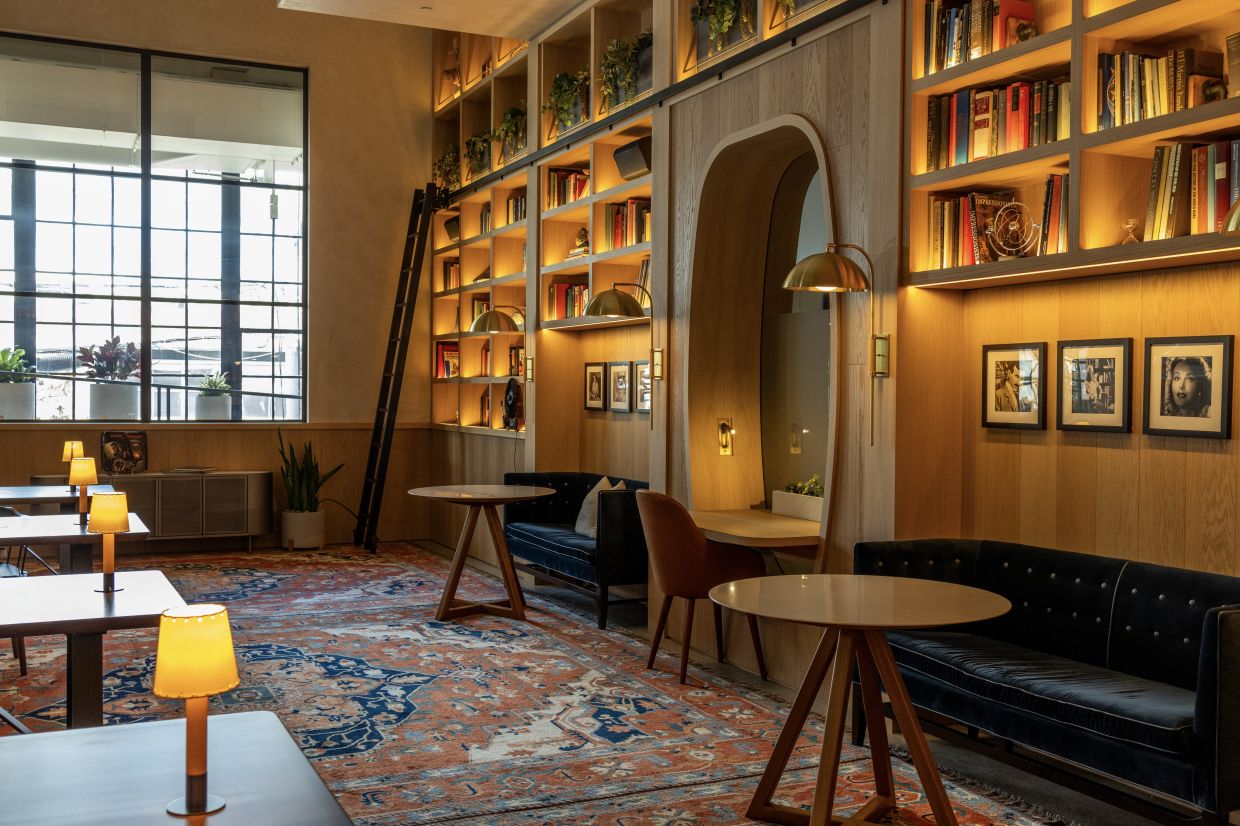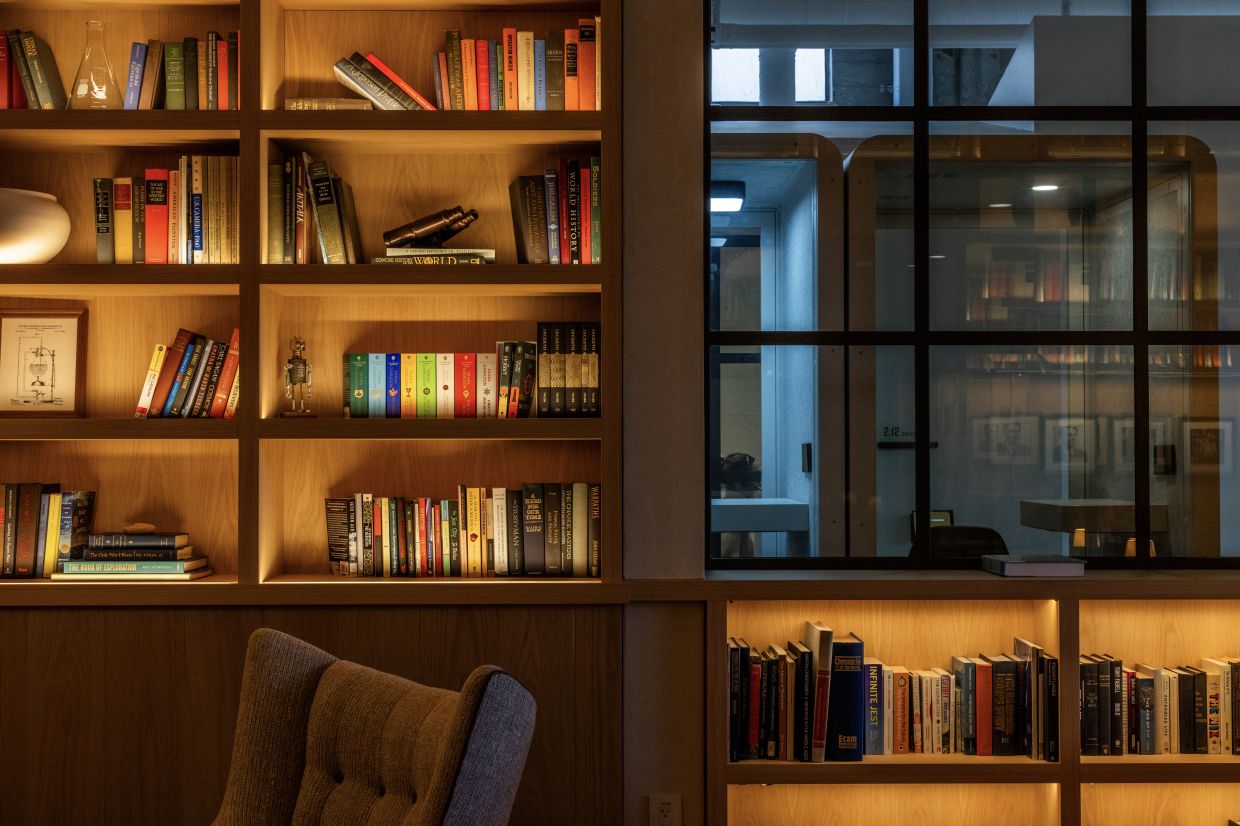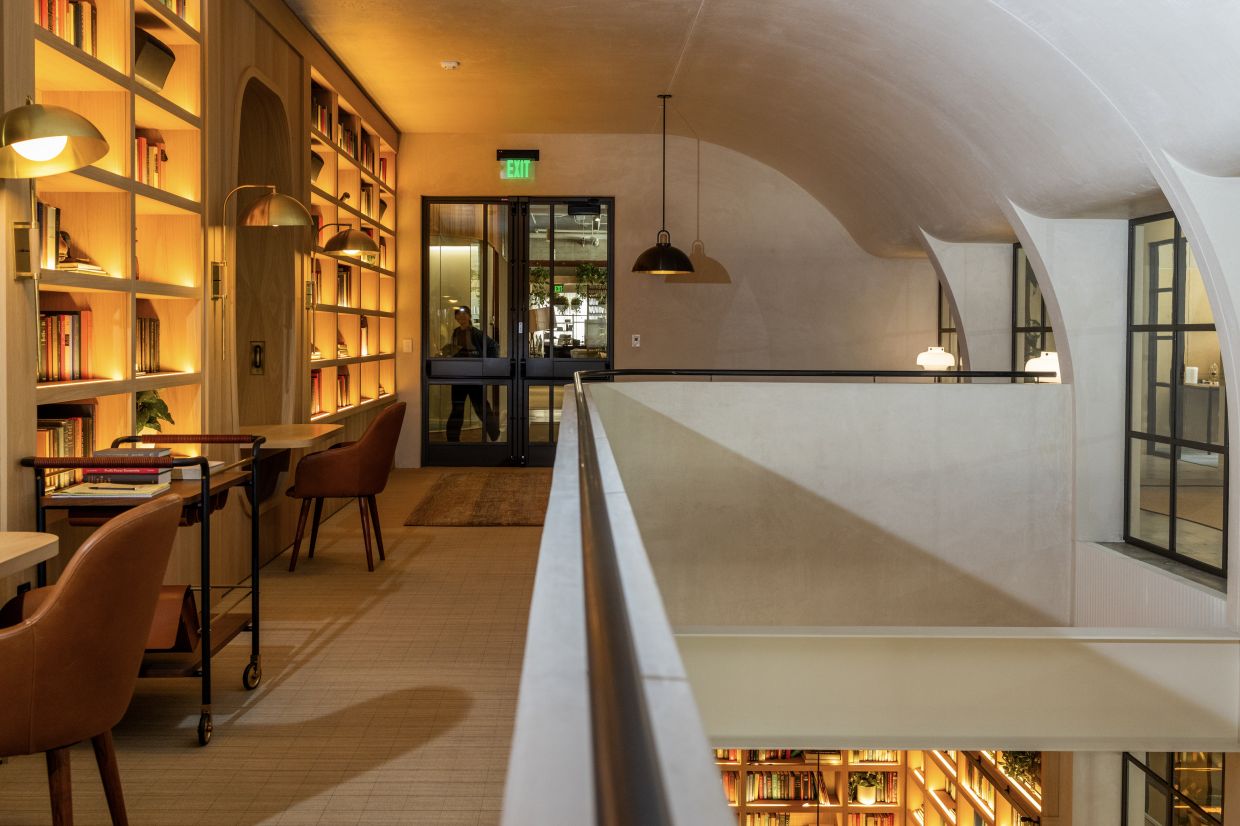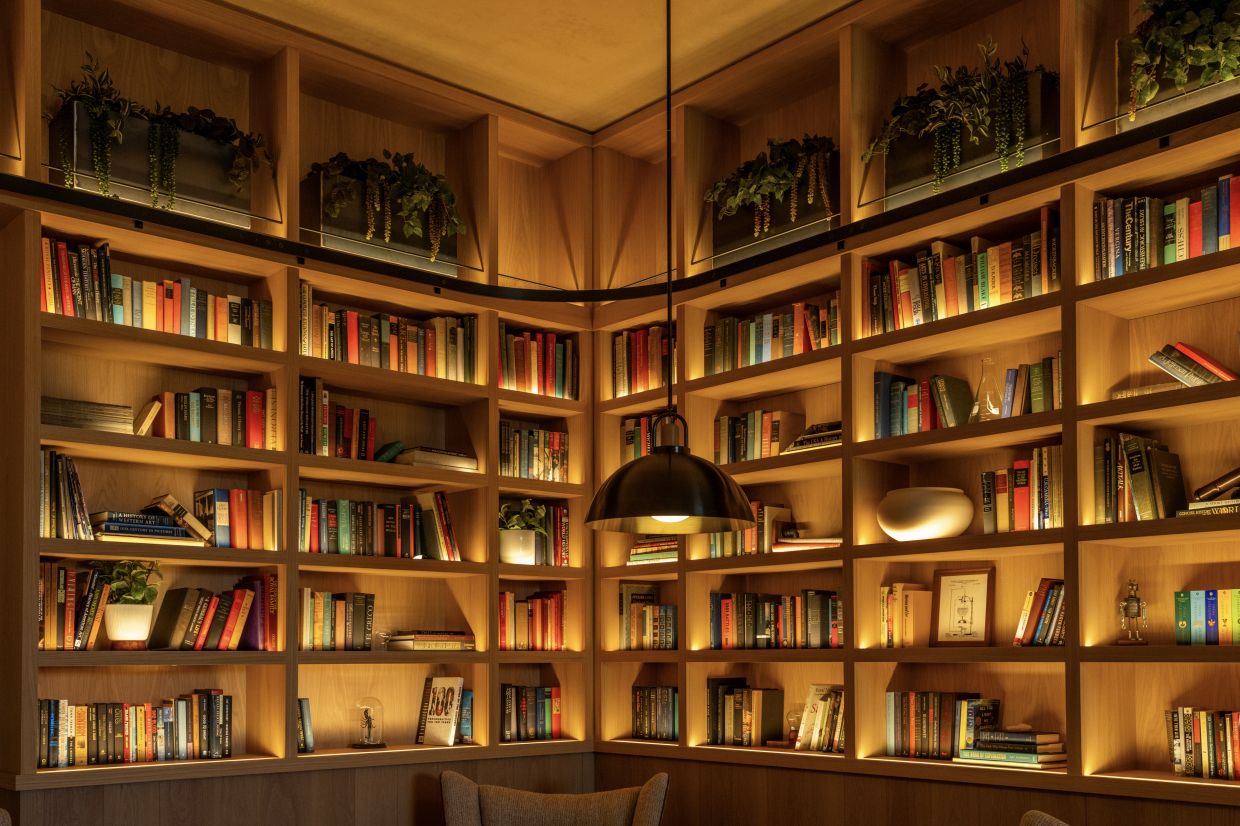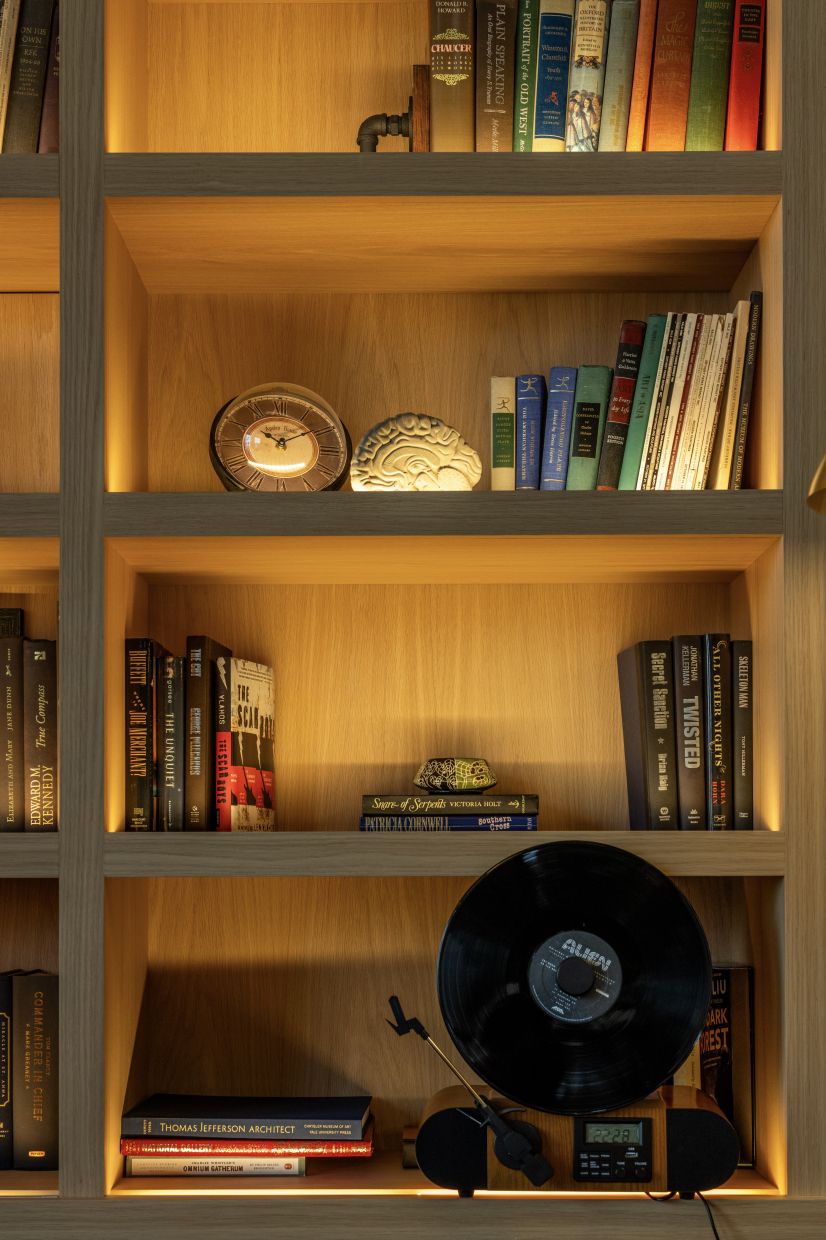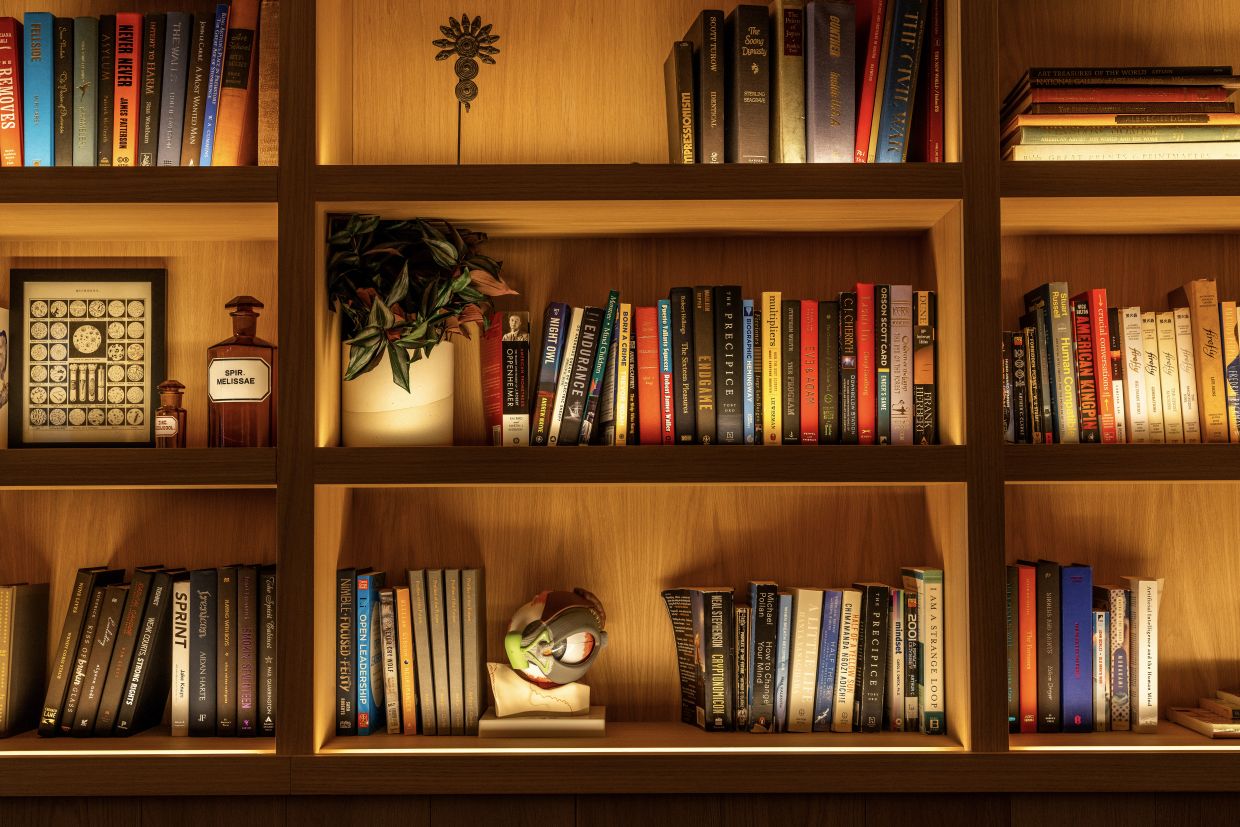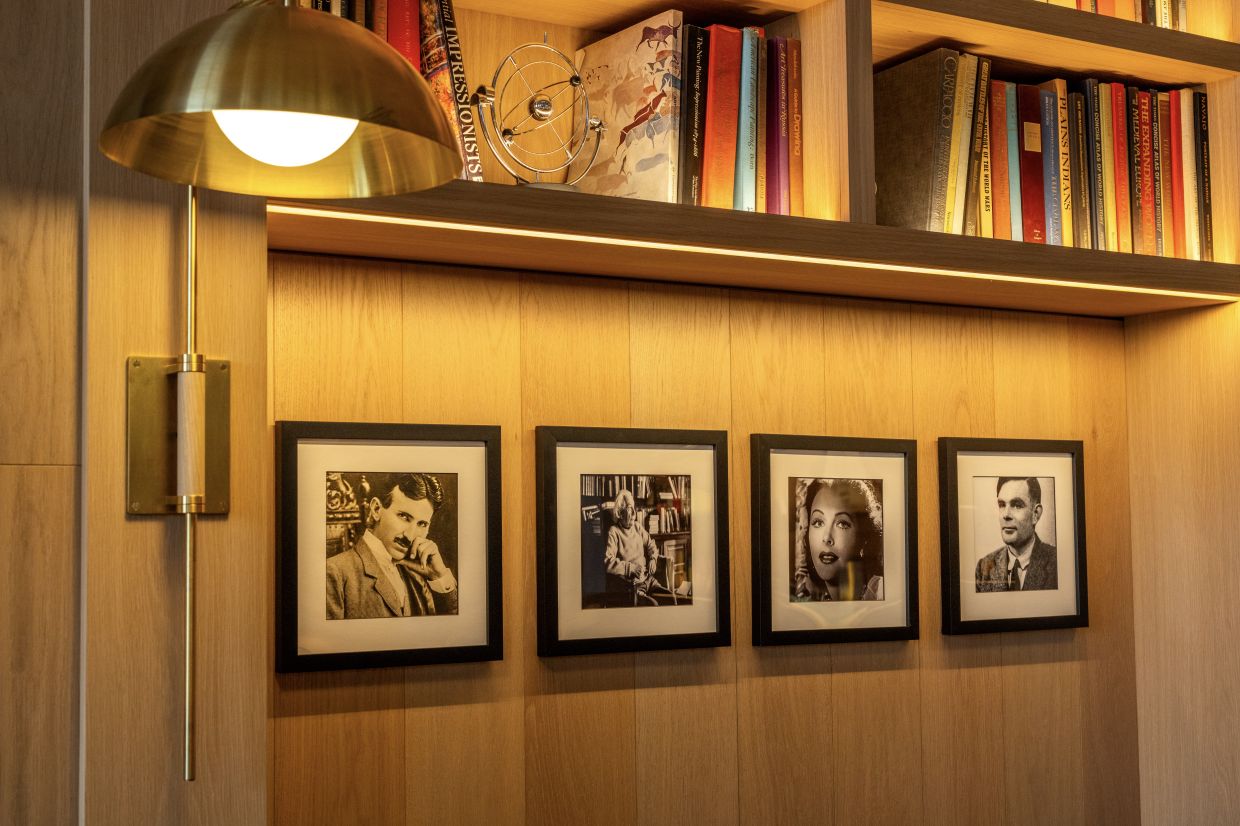The library inside the San Francisco office of OpenAI, on April 4, 2024. Some OpenAI employees say they find inspiration among the books of the company’s two-story library. — The New York Times
SAN FRANCISCO: The two-story library has Oriental rugs, shaded lamps dotting its desks and rows of hardbacks lining its walls. It is the architectural centerpiece of the offices of OpenAI, the startup whose online chatbot, ChatGPT, showed the world that machines can instantly generate their own poetry and prose.
The building, which was once a mayonnaise factory, looks like a typical tech office, with its communal work spaces, well-stocked micro-kitchens and private nap rooms spread across three floors in San Francisco’s Mission District.
But then there is that library, with the ambience of a Victorian Era reading room. Its shelves offer everything from Homer’s The Iliad to David Deutsch’s The Beginning Of Infinity, a favourite of Sam Altman, OpenAI’s CEO.
Built at Altman’s request and stocked with titles suggested by his staff, the OpenAI library is an apt metaphor for the world’s hottest tech company, whose success was fuelled by language – lots and lots of language. OpenAI’s chatbot was not built like the average Internet app: ChatGPT learned its skills by analysing huge amounts of text that was written, edited and curated by humans, including encyclopaedia articles, news stories, poetry and, yes, books.
The library also represents the paradox at the heart of OpenAI’s technology. Authors and publishers, including The New York Times, are suing OpenAI, claiming the company illegally used their copyrighted content to build its AI systems. Many authors worry that the technology will ultimately take away their livelihood.
Many OpenAI employees, on the other hand, believe the company is using human creativity to fuel more human creativity. They believe their use of copyrighted works is “fair use” under the law, because they are transforming these works into something new.
“To say that this is a public debate right now is an understatement,” said Shannon Gaffney, co-founder and managing partner of SkB Architects, an architectural firm that renovated OpenAI’s headquarters and designed its library. “Though things might look like they are going in different directions, the library serves as a constant reminder of human creativity.”
When OpenAI hired Gaffney’s firm to renovate the building in 2019, Altman said he wanted a library with an academic aura.
He wanted it to be a reminder of the Green Library, a Romanesque library at Stanford University, where he was a student for two years before dropping out to build a social media app; the Rose Reading Room, a Beaux-Arts study hall on the top floor of the New York Public Library in midtown Manhattan; and the library-like bar inside the now defunct Nomad Hotel, 15 blocks south of the Rose.
“My dining room and living room at home is inside a library – floor-to-ceiling books all the way around,” Altman said in an interview. “There is something about sitting in the middle of knowledge on the shelves at vast scale that I find interesting.”
Many titles, such as English Masterpieces, 700-1900 and Ideas And Images In World Art, seem like the weighty hardbacks that professional decorators place strategically inside hotel lobbies because they look the part. Still, the library is a reflection of the organisation that built it.
On a recent afternoon, two paperbacks sat beside each other at eye-level: Birds Of Lake Merritt (a field guide to the birds found in a wildlife refuge in Oakland, California) and Fake Birds Of Lake Merritt (a parody written by GPT-3, an early version of the technology that drives ChatGPT).
Some employees see the library as a quieter place to work. Long Ouyang, an AI researcher, keeps a rolling desk against the wall. Others see it as an unusually elegant break room. On weekends, Ryan Greene, another researcher, pumps his digital music through the audio speakers tucked among the hardbacks.
It is, other employees said, a far more inspiring place to work than a cubicle. “This is why so many people choose to work in the library,” Staudacher said.
Recently, Greene began feeding lists of his favourite books into ChatGPT and asking for new recommendations. At one point, the chatbot recommended The Book Of Disquiet, a posthumously published autobiography from Portuguese writer Fernando Pessoa. A friend, who knew his tastes well, had recommended that he read the same book.
“Given the trends and patterns in things that have happened in the past, the technology can suggest things for the future,” Greene said.
Gaffney argued that this blend of the human and the machine will continue. Then she paused, before adding: “That, at least, is what I hope and feel.” – The New York Times
The library inside the San Francisco office of OpenAI, on April 4, 2024. Some OpenAI employees say they find inspiration among the books of the company’s two-story library. — The New York Times
The library inside the San Francisco office of OpenAI, on April 4, 2024. (Christie Hemm Klok/The New York Times)
The library inside the San Francisco office of OpenAI, on April 4, 2024. Built at chief executive Sam Altman’s request and stocked with titles suggested by his staff, the OpenAI library is an apt metaphor for the world’s hottest tech company, whose success was fueled by language – lots and lots of language. — The New York Times
The library inside the San Francisco office of OpenAI, on April 4, 2024. (Christie Hemm Klok/The New York Times)
The library inside the San Francisco office of OpenAI, on April 4, 2024. Built at chief executive Sam Altman’s request and stocked with titles suggested by his staff, the OpenAI library is an apt metaphor for the world’s hottest tech company, whose success was fueled by language – lots and lots of language. — The New York Times
The library inside the San Francisco office of OpenAI, on April 4, 2024. (Christie Hemm Klok/The New York Times)
The library inside the San Francisco office of OpenAI, on April 4, 2024. The library’s two floors have desks where some OpenAI employees quietly work. — The New York Times
The library inside the San Francisco office of OpenAI, on April 4, 2024. (Christie Hemm Klok/The New York Times)
The library inside the San Francisco office of OpenAI, on April 4, 2024. Built at chief executive Sam Altman’s request and stocked with titles suggested by his staff, the OpenAI library is an apt metaphor for the world’s hottest tech company, whose success was fueled by language – lots and lots of language. — The New York Times
The library inside the San Francisco office of OpenAI, on April 4, 2024. (Christie Hemm Klok/The New York Times)
The soundtrack for the 1979 science-fiction movie ‘Alien’ sits on a record turntable next to a book about Thomas Jefferson’s architecture in the library inside the San Francisco office of OpenAI, on April 4, 2024. Built at chief executive Sam Altman’s request and stocked with titles suggested by his staff, the OpenAI library is an apt metaphor for the world’s hottest tech company, whose success was fueled by language – lots and lots of language. — The New York Times
The soundtrack for the 1979 sciencefiction movie “Alien” sits on a record turntable next to a book about Thomas Jefferson’s architecture in the library inside the San Francisco office of OpenAI, on April 4, 2024. (Christie Hemm Klok/The New York Times)
The library inside the San Francisco office of OpenAI, on April 4, 2024. Built at chief executive Sam Altman’s request and stocked with titles suggested by his staff, the OpenAI library is an apt metaphor for the world’s hottest tech company, whose success was fueled by language – lots and lots of language. — The New York Times
The library inside the San Francisco office of OpenAI, on April 4, 2024. (Christie Hemm Klok/The New York Times)
Framed photos of famous people in science, including Nikola Tesla, Albert Einstein, Hedy Lamarr and Alan Turing, in the library inside the San Francisco office of OpenAI, on April 4, 2024. Built at chief executive Sam Altman’s request and stocked with titles suggested by his staff, the OpenAI library is an apt metaphor for the world’s hottest tech company, whose success was fueled by language – lots and lots of language. — The New York Times
Framed photos of famous people in science, including Nikola Tesla, Albert Einstein, Hedy Lamarr and Alan Turing, in the library inside the San Francisco office of OpenAI, on April 4, 2024. (Christie Hemm Klok/The New York Times)




